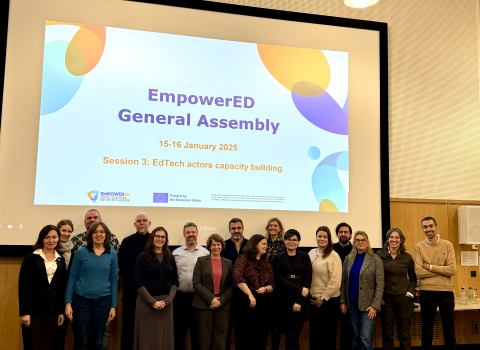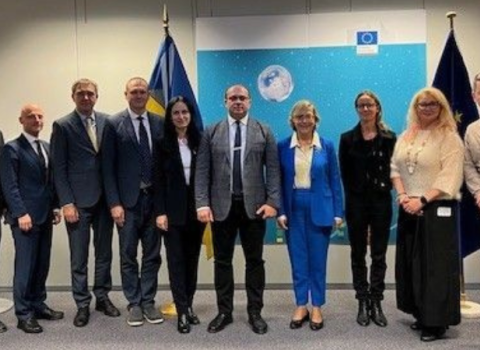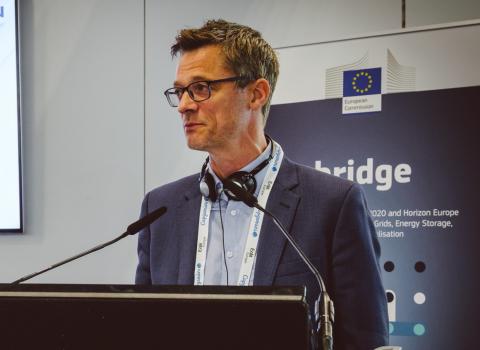
Richard L. Hudson, Editor, Science|Business
The change, in brief: a re-orientation of a significant portion of Brussels R&D and innovation funding from supporting technologies generically, to targeting R&D to solve specific “Grand Challenges” such as climate change, alternative energies, and healthcare for an ageing population. The change is intended, by its proponents, to do good for the EU and the world, and to solve some knotty policy problems that hamper existing R&D programmes. If the policy change gets confirmed over the next 12 months, it will affect the way universities, research institutes and companies work with the EU R&D and innovation programmes. (The ‘if’ is no small point, however; read on.)
The first visible sign of the shift came just last week at a conference held on July 7-8 in Lund, Sweden, by the current Swedish presidency of the EU. The so-called ‘Lund Declaration’ is a short – and anodyne, to anyone not steeped in EU lore – statement of the principles that ought to inform EU R&D and innovation policy. It was published by the presidency, which means it has official blessing. While there are several interesting details (an endorsement for more scientific infrastructure projects, and for the modernisation of universities) the headline message was Grand Challenges.
Related article
Green cars and R&D
The main justification for the declaration: R&D will be needed to help solve our pressing social and environmental problems, and so Europe needs to mobilize researchers to tackle these issues. Of course, the EU has already started moving in that direction with, for instance, the adoption earlier this year of a package of measures to support technologies for ‘green cars,’ and related energy-saving ideas. Likewise, the EU’s newly created European Institute of Innovation and Technology has already picked three such ‘challenges’ as the focus of its first, now-forming, research consortia.
The groundwork for the declaration has been going on for months, in scores of private committees, expert panels, conferences and seminars (Disclosure: Science|Business’ customers include some of the organisers of these meetings; but this opinion represents our own views, alone.) Worries about climate change and energy supply, plus the pressure of the economic crisis, are now pushing the idea forward. The Swedes have grasped reform of the R&D and innovation systems as a priority for their next five months at the EU’s helm. And there’s a new Parliament and a new Commission (from the Autumn) that will create that most dangerous of governmental situations: new politicians in search of something new to do. In R&D and innovation, Grand Challenges is looking like “it.”
But what’s especially interesting is that an approach like this is being advocated as a solution to lots of long-festering problems, both inside Brussels and between Brussels and the member-states.
Related article
Turf wars in Brussels
Another perceived problem is infighting between different parts of the Commission, protecting bureaucratic turf. There are, for instance, six different Directorates-General (in military terms, battalions in the Commission staff army) with direct responsibility to spend money on R&D and innovation, plus another half-dozen that dip into the field from time to time. There are 22 different committees of officials, involving member-state bureaucrats, that monitor just the two main innovation programmes, Framework and CIP – and they have at least a dozen more or less separate work plans. For small companies, often a professed concern of the Commission, there is no obvious way to move from one programme to the other as the technology in question matures. Indeed, even the application forms and processes are different, helping fuel a small industry of consultants who make their living by helping applicants fill out confusing forms.
Then there is the infighting between Brussels and the national ministries of research, education and industry – again, turf wars of the bloodiest kind. The Commission, for the past few years, has been arguing that there’s too much duplication (in 2007 it counted 29 nanotechnology programmes among 27 member-states, for instance; today, barely two years later, nanotech is as out of political fashion as last year’s Paris couture collection.) But its efforts to coordinate the grants and incentives, under the deliberately dull title of ‘joint programming’, have been met unenthusiastically by the national ministries, research councils and others who feel (with justification under existing EU treaties) that it’s mainly their own business to decide how their university researchers spend their lab time.
Into this policy maelstrom comes the Grand Challenges idea. As in a turbulent system, goes the thinking, a sudden shock can knock all the previously chaotic elements into (at least temporary) coherence. The Grand Challenges idea is such a shock. It may sound odd, but stranger things have worked in politics. How else, but through the shock of an economic crisis, did the biggest expansion of government since Roosevelt get through a US Congress that had previously spent decades trying to do the opposite?
Question time
So, the political stars are temporarily aligned, but now comes the hard part. After the initial blooming of interest and consensus will come the details – and there, it’s likely, all the old political problems will resurface. Among the major questions that will need to be tackled:
-
Who decides what the Grand Challenges are? And how many are there: three or 30? Here again, it will be a contest inside Brussels, and among the member-states, to call the shots.
-
How much of the RDI programmes should be re-oriented towards the challenges? 30 per cent? 50 per cent?
-
Who spends the resulting money? This strategy could be used as a basis to expand the role of Brussels, or, equally, to shrink it – you can build a policy argument in either direction. And within Brussels, how do the administrative boxes get divided up? Fancy a DG Grand Challenges, anyone?
-
What besides money is involved? There’s consensus that money alone can’t buy innovation; there needs also to be regulations, standards, fiscal incentives, competition policies and other instruments that shape the environment for innovation. But it’s even harder to get agreement on policy than on budgets; apart from finance ministries, after all, everybody loves to spend money.
At this writing, the outcome is impossible to predict. There are too many wild cards – the Irish vote on the Lisbon Treaty in October, the make-up of the new Commission, the state of the EU economy next winter. But the point remains: this is one of those rare moments in government when all kinds of previously impossible things start to look possible. So paying attention to the debate matters.




 A unique international forum for public research organisations and companies to connect their external engagement with strategic interests around their R&D system.
A unique international forum for public research organisations and companies to connect their external engagement with strategic interests around their R&D system.